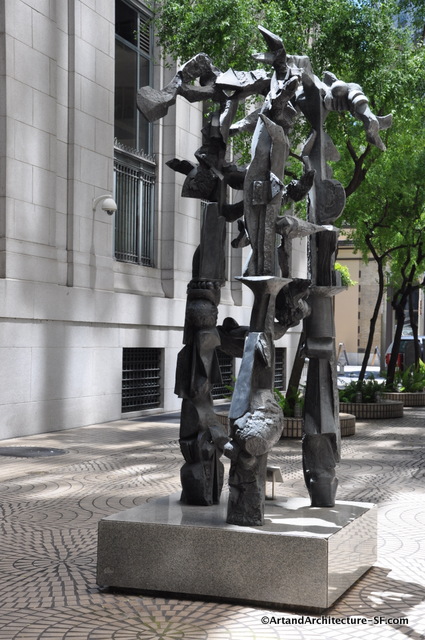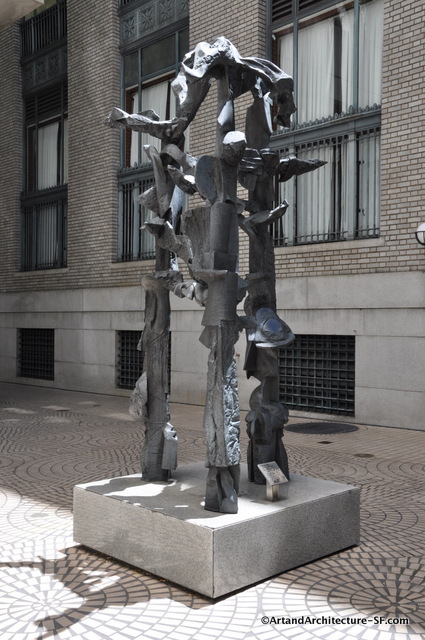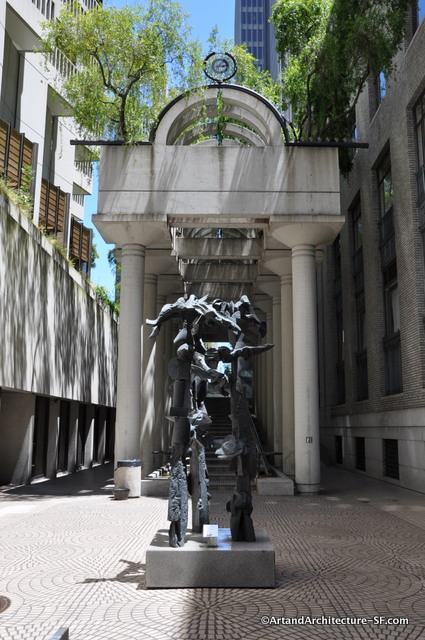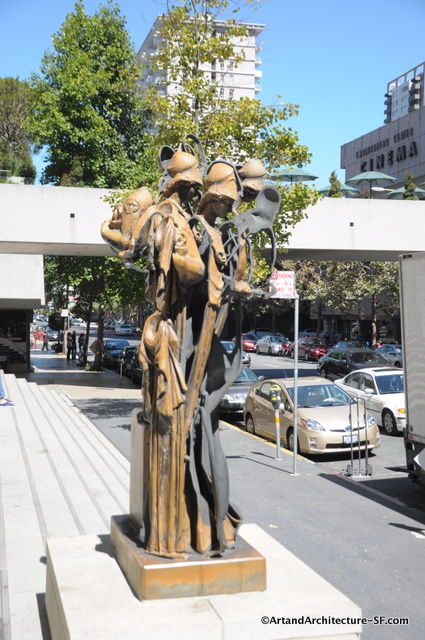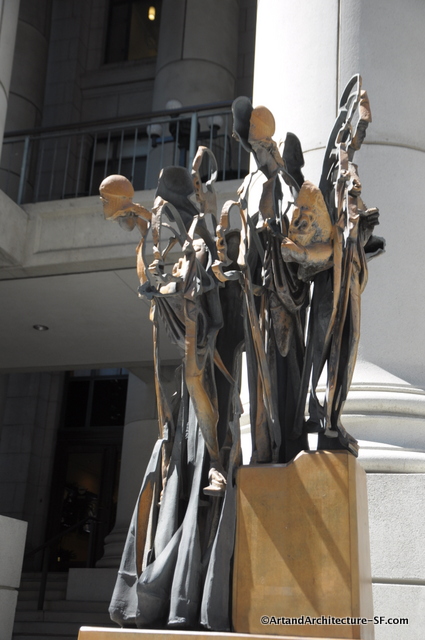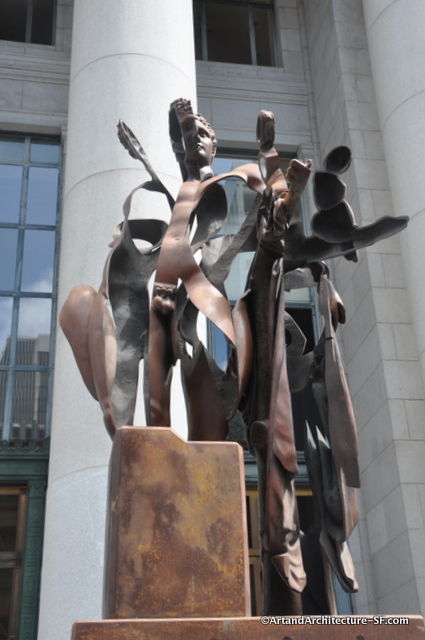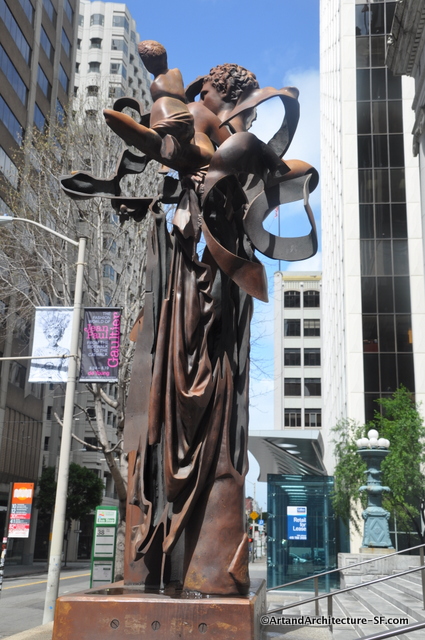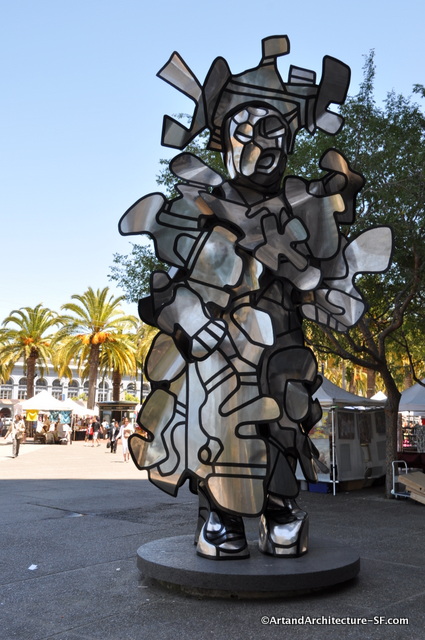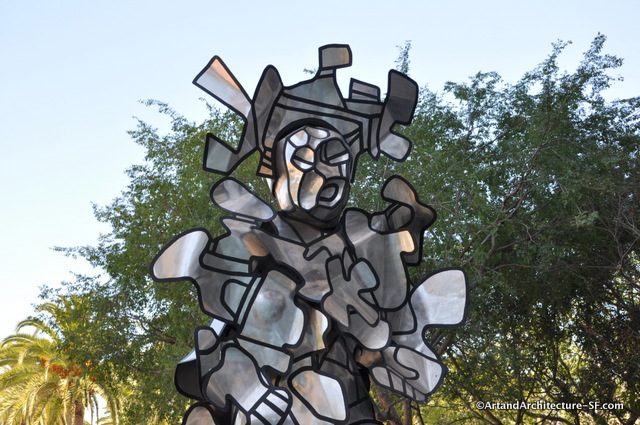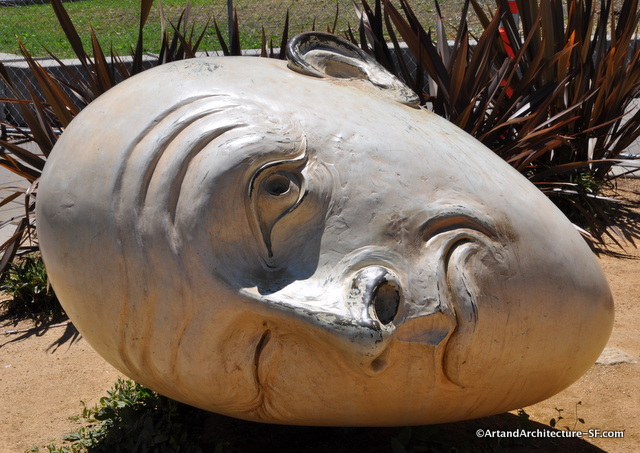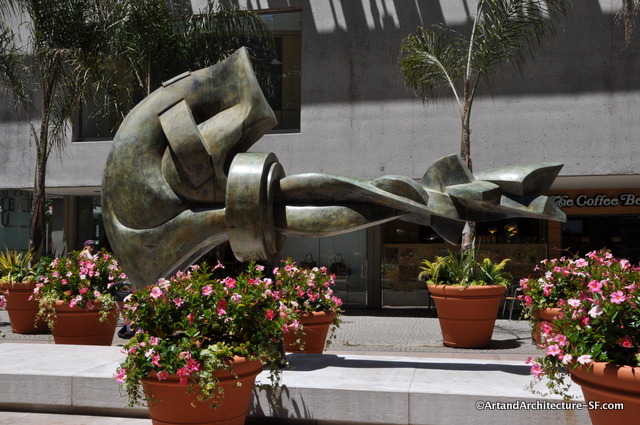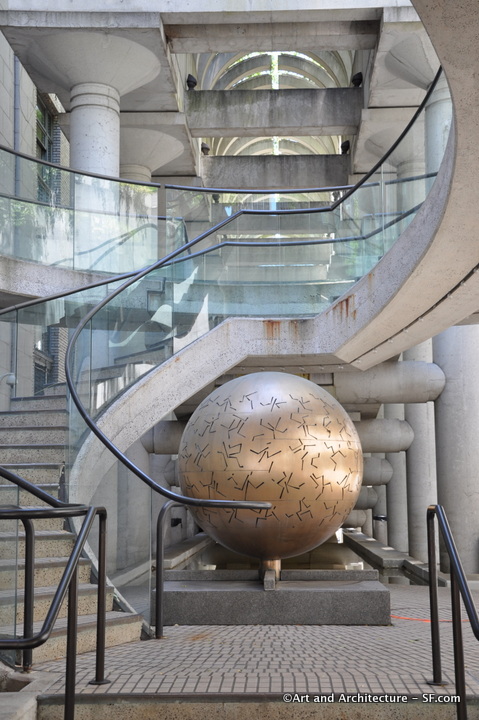More on the Embarcadero Center, San Francisco.
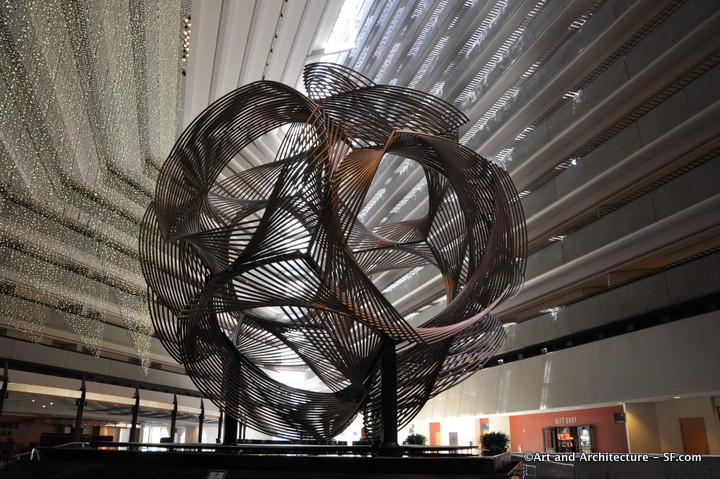 Walk inside the Hyatt Regency adjacent to Embarcadero Center One, ride the escalator up and, behold, Charles O. Perry’s “Eclipse”, a 40-foot high geodesic sphere consisting of 1,400 pieces of curved metal tubing joined together in pentagons and supported by three massive steel legs.
Walk inside the Hyatt Regency adjacent to Embarcadero Center One, ride the escalator up and, behold, Charles O. Perry’s “Eclipse”, a 40-foot high geodesic sphere consisting of 1,400 pieces of curved metal tubing joined together in pentagons and supported by three massive steel legs.
Continue out onto Justin Herman Plaza. Justin Herman was the Executive Director of the Redevelopment Agency. According to SPUR (San Francisco Planning and Urban Research) “Justin Herman was responsible for guiding the Agency during its early years. As Executive Director of the Agency from 1960 until 1971, Herman oversaw the construction of a number of schools, playgrounds, churches and low-income apartments. He was the architect of much of the changing face of San Francisco at that time. But for all of the benevolence he bestowed, “redevelopment” remained highly controversial. Much of the reason lies in the fact that urban policy in the 1950’s through the 1970’s was distributed in a top-down fashion. It was formulated and implemented by “experts” who knew what was “best” for cities and communities – even in cases where the cure might seem worse than the problem. This professional detachment was to be incendiary when applied to the simmering unease that existed in the many communities of color in San Francisco at that time.”

The Plaza is dominated by the Vaillancourt Fountain. Near the ground floor restaurants between the Hyatt Regency and Embarcadero One is this wonderful sculpture. Jean Dubuffet’s La Chiffonniere, a stainless steel structure with black epoxy that represents a cartoon-like ragged woman. Walking around this gem evokes different pictures with every angle.
*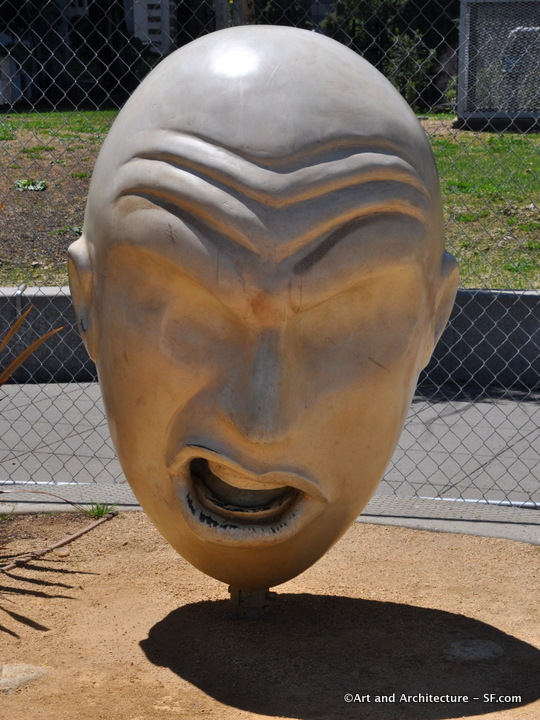 Behind the fountain on Market Street you will bump into these two fellas. “Yin and Yang” by Robert Arneson they were originally commissioned by the University of California at Davis where Arneson taught until 1991 (he died in 1992).
Behind the fountain on Market Street you will bump into these two fellas. “Yin and Yang” by Robert Arneson they were originally commissioned by the University of California at Davis where Arneson taught until 1991 (he died in 1992).
Robert Arneson gained notoriety as an artist in the 1960’s when he became associated with the Bay Area’s funk art movement. At a time when ceramics were relegated to “craft”, his use of clay in irreverent, unorthodox ways challenged the art world’s conceptions of what was considered fine art. His offbeat sense of humor created a firestorm with his portrayal of the murdered mayor, George Moscone.
It is one of the most notorious conflicts between an artist and city politics, the bust was ultimately rejected by the Arts Commission for its inclusion of references to Moscone’s assassination and the subsequent trial of Dan White. Currently the bust is in a private collection.
As a professor at UC Davis, Arneson was an easily accessible member of the community, many people I have known through the years had the pleasure of taking classes from him, and walked away feeling they had made a friend not just taken an art class.
The Arneson pieces were part of the 2006-2007 SFAC budget, they were purchased for $225,000.
